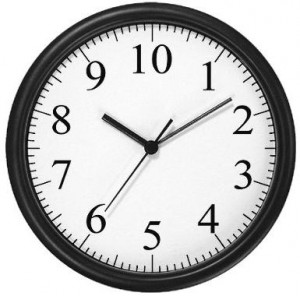 The vast majority of U.S. residents shifted their clocks back to standard time last weekend, effectively “gaining” an hour of time on Sunday. In my house, it meant that my early-rising daughter was up at 4:30 a.m.
The vast majority of U.S. residents shifted their clocks back to standard time last weekend, effectively “gaining” an hour of time on Sunday. In my house, it meant that my early-rising daughter was up at 4:30 a.m.
instead of 5:30 a.m.!
Early-riser or not, changing the clock does wreak some havoc on people of all ages. The idea first came about in the early 1900s to extend daylight hours in the summer months, forgoing that hour of daylight in the mornings. Since then, there have been dozens of research studies on the benefits and drawbacks of Daylight Savings Time. During this week when we’re all adjusting to those earlier sunrises, I thought it’d be interesting to look at what the evidence says about Daylight Savings Time.
- Daylight Savings Time reduces criminal activity in the summer months. One review, published in the Review of Economics and Statistics, found that springing our clocks forward in the summertime leads to a 7 percent decrease in criminal activity.
- Another recent review found longer daylight hours in the evenings leads to increased physical activity. In the review, researchers included 15 studies conducted in nine countries. They found the average increase in activity was small in absolute terms, but that increasing evening daylight hours was more effective than many other interventions to increase physical activity among youth. In addition, they found Daylight Savings Time helped kids across the population increase activity levels evenly.
- Transitioning the clocks in the spring and fall does not have a significant impact on student performance. An analysis of more than 22,000 elementary students in six countries found no reliable evidence that changing the clocks affected student scores in math, reading or science.
- Researchers have found that changing the time in both the spring and fall leads to an overall loss of sleep. A review published in the journal Sleep Medicine Reviews found that the shift to Daylight Savings Time and back to standard time in the fall makes it more difficult for people to fall asleep and leads them to wake up more often during the night. This sleep loss, the data show, lasts for approximately one week following the time shift.
- Another sweeping review also finds evidence that Daylight Savings Time decreases motor vehicle accidents and results in energy savings because there is more daylight during peak demand times. These researchers go so far as to call for Daylight Savings year-round to take advantage of the benefits while avoiding the downsides of changing the clocks.
The body of evidence on Daylight Savings Time points to positive effects across a wide range of topics, with the only downside being the actual shift in the clocks. Unfortunately, at this time of year, we are not at the receiving end of these benefits.
For my part, I’m going to do my best to become aware of the downsides of standard time, and do my best to counteract them. That means paying special attention to driving during the earlier dusk and dark hours, making sure my kids get outside to play before it gets dark, and trying to get enough sleep each night.



Speak Your Mind